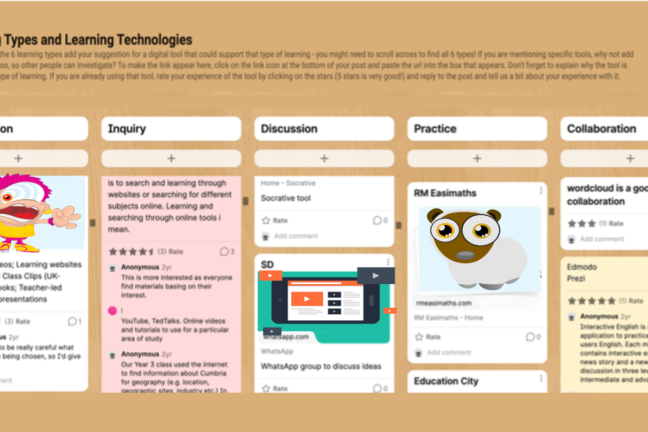1.10 Digital Learning for Teachers

In many conflict- or crisis-affected contexts, digital infrastructure may be weak, and it is hard to guarantee reliable access to the internet or digital devices for learning. Nevertheless, digital communications are often vital and many people make huge efforts to keep connected.
Even if we cannot always use digital learning with children and young people, teachers often do have access to a mobile phone and broadband internet, or are able to use a laptop computer at school. Schools can sometimes also provide ways for teachers to access digital resources, such as in the blended teacher professional development (TPD) contexts we described in Step 1.2.
This is why we have created this CoMOOC - because we can reach teachers through digital learning, and we can help those teachers to support their students, even if the students do not have online access. In this step, we invite you to reflect on your experience of learning with digital technologies in this way.
We aimed to design this learning experience in a way that would be relevant to teachers’ lives, and support you to learn, apply and share your knowledge with others. The digital tools we have used to do this include:
- Video
- Online discussion
- Padlets
- A quiz
Exercise - add your own tools to the Padlet
On this Learning Types and Digital Tools Padlet, you will find six columns - one for each of the six learning types. Add a post underneath each learning type with your suggestion for a digital tool that could support that type of learning. You might need to scroll across to see all six types!
If you are mentioning specific tools, why not add a link to them too, so other people can investigate? On the Padlet, you can create a thumbnail image of a website by clicking on the link icon and pasting the url into the box that appears. Then explain why the tool is good for that type of learning.
If you are already using a tool that someone else has suggested, rate your experience of the tool by clicking on the stars (1 star = poor, 5 stars = very good) and reply to the post and tell us a bit about your experience with it.
If you can’t think of a digital technology, add a conventional technology – this helps us see some of the parallels between old and new technologies for education.
In the ‘Downloads’ section below, you will find a PDF with Teacher-recommended digital tools (a list co-created by teachers on another CoMOOC, Blended and Online Learning Design, and teachers and learners in a migrant learning centre in Thailand).
Courses for teachers new to online learning
The Get started with online learning course from the Transformation by Innovation in Distance Education (TIDE) project provides an introduction to online learning. It is also available in Burmese အွန်လိုင်းမှ ပညာသင်ယူမှုကို စတင်လိုက်ပါ
The Digital skills, digital learning course, also from the TIDE project, aims to enable you to:
- Understand how learning takes place every day
- Reflect on how you engage with the web
- Know how to learn effectively using MOOCs
- Explore and engage in a range of digital skills and open practices
There is a Burmese version ဒစ်ဂျစ်တယ်နည်းပညာ ကျွမ်းကျင်မှု၊ ဒစ်ဂျစ်တယ်နည်းပညာဖြင့် လေ့လာခြင်း of this course too.
Over to you
In the forum, share
- What digital tools, if any, do you use in your teaching?
- Considering the Conversational Framework and the six learning types that we discussed in steps 1.8 and 1.9, what types of learning do these different digital tools support in the educational context you work in?
- What else should we consider when choosing a digital technology? You might want to think about accessibility, or how it feels to learn online. For example, are some tools more effective than others in creating an inclusive and welcoming environment for everyone to learn in?
© UCL and the Inclusive Education Foundation (CoMOOCs Team), CC BY 4.0
